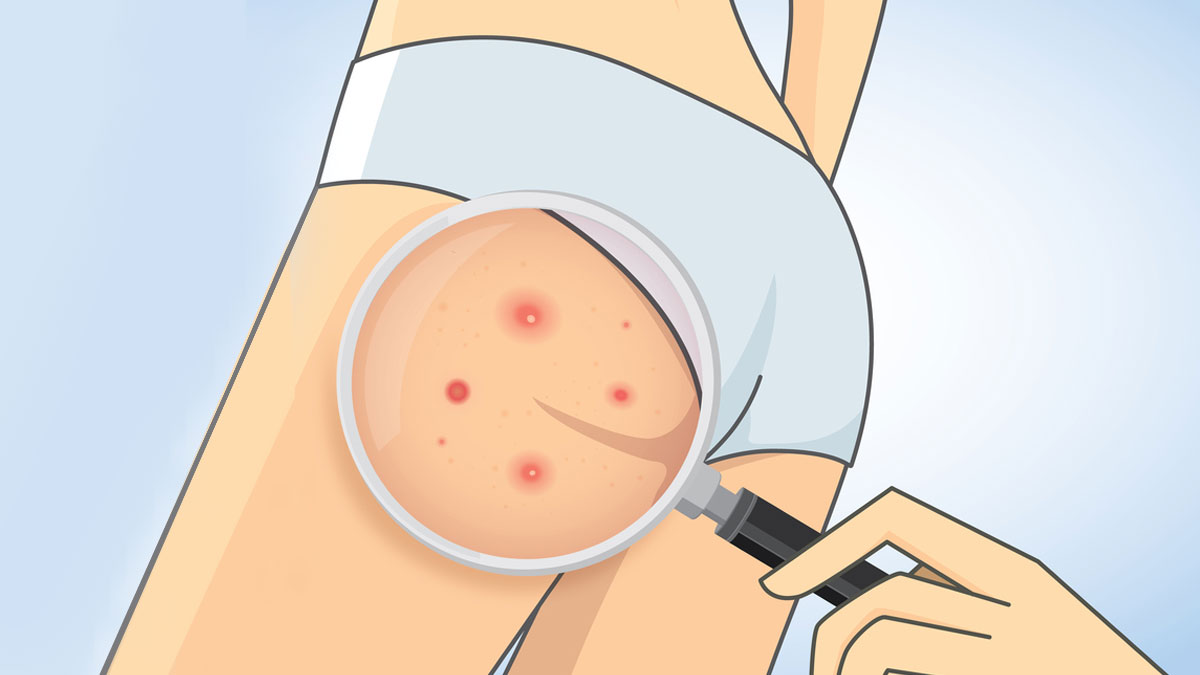Keratosis Pilaris and Eczema: Understanding and Managing Skin Conditions
As a beautician, having a deep understanding of common skin conditions like keratosis pilaris and eczema is crucial. These conditions not only affect the physical appearance of the skin but also the confidence of those seeking your expertise. While they are distinct issues, they share some similarities in how they impact the skin's texture and appearance, making it important to understand both.
Keratosis pilaris is a common, harmless skin condition that causes rough patches and small, acne-like bumps, usually on the arms, thighs, cheeks, and buttocks. These bumps are often light-colored and don't hurt or itch. It's caused by a buildup of keratin, a protein that protects skin from infections and other harmful things. This buildup blocks the opening of a hair follicle, resulting in small bumps. For those interested in learning more about managing this condition, an informative resource can be found here.
On the other hand, eczema, or atopic dermatitis, is an inflammatory skin condition characterized by red, itchy, and swollen patches of skin. It can occur anywhere on the body and is often chronic, meaning it can come and go over time. The exact cause of eczema isn't fully understood, but it's thought to be related to a combination of genetic and environmental factors.

Common Symptoms and Causes
Keratosis Pilaris Symptoms and Causes
People with keratosis pilaris typically notice rough, bumpy patches on their skin. These patches can vary in color from skin-toned to red or brown. The condition is more common in children and teenagers and often improves with age. Although the bumps are harmless, many people seek treatment to improve the skin's appearance.
The primary cause of keratosis pilaris is the buildup of keratin, which blocks hair follicles. This can be influenced by genetic factors, as the condition often runs in families. It is also more common in individuals with dry skin, which can exacerbate the condition.
Eczema Symptoms and Causes
Eczema presents as red, inflamed patches of skin that can be extremely itchy. In some cases, the skin can also become thickened, cracked, or scaly. The itchiness can be severe, leading to scratching, which may cause further irritation or infection.
The causes of eczema are complex and involve an interplay of genetic and environmental factors. People with a family history of eczema or allergies are more likely to develop the condition. Environmental triggers, such as allergens, stress, and harsh skincare products, can also provoke eczema flare-ups.
Effective Management Techniques
Managing Keratosis Pilaris
While there's no cure for keratosis pilaris, several management strategies can help reduce its appearance. Regular exfoliation with gentle scrubs can help remove dead skin cells and prevent hair follicles from becoming blocked. Moisturizing the skin with products containing lactic acid, urea, or salicylic acid can also help smooth the skin's texture.
For beauticians, advising clients to avoid harsh chemicals and opt for gentle, hydrating products can be beneficial. Chemical peels, such as those discussed here, may also be an option for some clients.
Managing Eczema
For those with eczema, managing triggers is a key part of treatment. Identifying and avoiding allergens or irritants can help prevent flare-ups. Regular use of emollients and moisturizers can help maintain the skin's barrier function and reduce dryness.
Topical corticosteroids may be prescribed to reduce inflammation and itching during flare-ups. Beauticians can play a role by recommending fragrance-free, hypoallergenic products that soothe the skin.
Integrating Knowledge into Practice
As a beautician, understanding these conditions can significantly enhance your ability to provide tailored skincare advice and treatments. Educating clients about their skin conditions and potential treatment options can empower them to take control of their skincare routines.
For instance, advising clients with keratosis pilaris to wear breathable fabrics, as suggested here, can prevent irritation. Similarly, providing information on the benefits of retinol for skin texture, as discussed here, can be invaluable.

FAQs
What is the difference between keratosis pilaris and eczema?
While both are skin conditions, keratosis pilaris is characterized by rough, bumpy skin, whereas eczema presents as red, itchy, and inflamed patches. The causes and management strategies differ, making it crucial to identify the specific condition.
Can diet affect keratosis pilaris and eczema?
Diet can influence skin health, although it may not directly cause keratosis pilaris or eczema. A balanced diet rich in vitamins and minerals supports overall skin health, and some people find that avoiding certain foods helps manage symptoms.
Are there professional treatments for these conditions?
Yes, professional treatments such as chemical peels and laser therapy can help manage keratosis pilaris. For eczema, dermatologists may prescribe topical treatments or light therapy. Consulting with a skincare professional can help determine the best approach for each individual.

